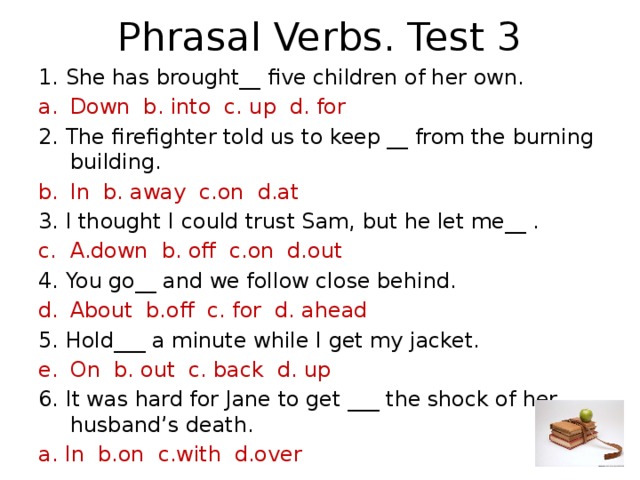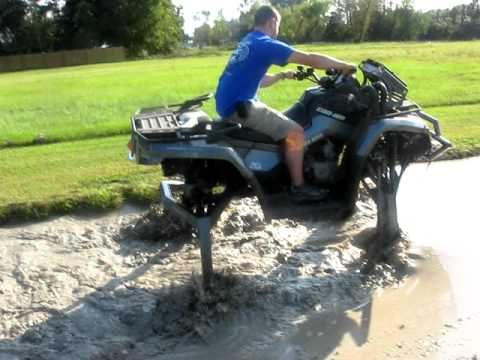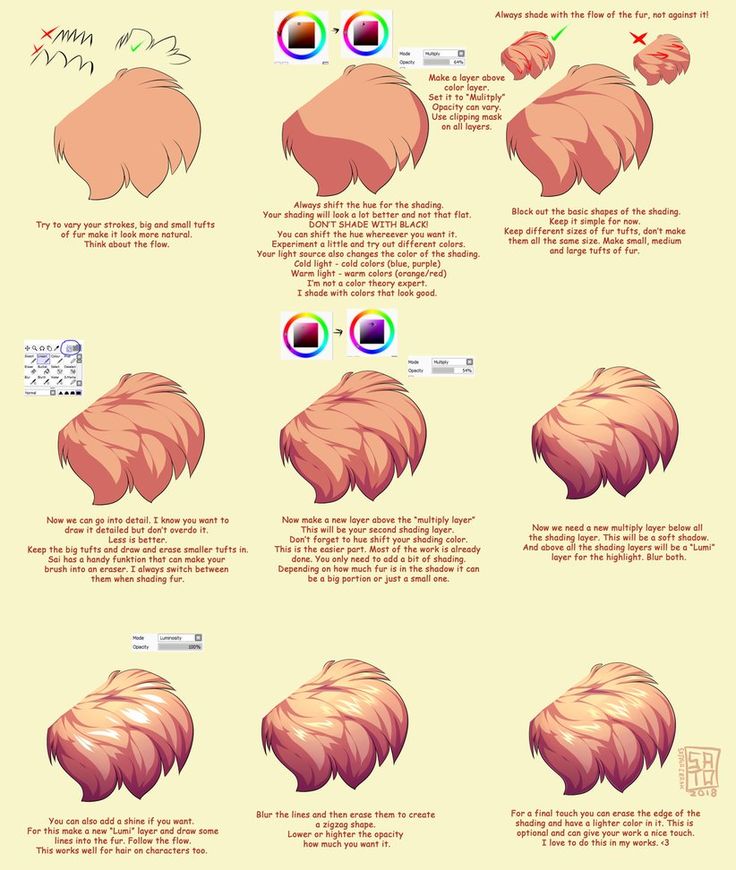The off-road industry is booming, and there’s no better time than the present to join the fun. If you want to ride along on your very own ATV (also known as a four wheeler), you’re in luck! There are now more options than ever when it comes to ATV size and power. With so many four wheelers on the market, your perfect machine is out there… somewhere. You might just need a little help finding it.
As always, SuperATV is here to lend a helping hand. Let’s talk about the different ATV sizes that are out there and find out which one is perfect for you.
Riding four wheelers is a fun, thrilling way to experience the great outdoors. But with so many different machines on the market, how can you know which size is right for you?When you’re looking at the physical stature of ATVs, you’ll quickly notice that these machines come in all different sizes. This is important for a couple of reasons. The first reason is everyone is different. A shorter individual might not be very comfortable sitting on a massive four wheeler. The same goes for a tall person on a smaller model.
The other reason to be aware of your ATV’s size involves trailering. If you plan on transporting your four wheeler, either in the bed of your truck or on a trailer, you’ll need to know the length and width of that machine to make sure it will fit.
So exactly how long and wide are ATVs, anyway? While there is quite a bit of variance, most four wheelers fall into specific size categories.
We’ll start with some general measurements. The average length of an ATV is around 83” and the average width is 47”. Most machines you come across will have measurements close to this.
But not all of them! Check out these ranges, broken down by ATV type. This should give you a better grasp of how big these machines are and what size quad might be best for you.
But when talking about ATV size, most people aren’t referring to the physical length and width of that machine. Most riders compare ATV size by their engine displacement. This number is given in cubic centimeters (cc) and refers to the volume of your engine. ATVs with bigger cylinders and pistons will have higher displacement, thus more power.
Most riders compare ATV size by their engine displacement. This number is given in cubic centimeters (cc) and refers to the volume of your engine. ATVs with bigger cylinders and pistons will have higher displacement, thus more power.
We’re not kidding when we say there’s an ATV for everyone. There are small 50cc youth ATVs, aggressive 1000cc sport ATVs, and everything in between. It’s important that the machine’s displacement match the experience level of the rider. Jumping on something too fast and powerful can be dangerous.
ATVs come in all sizes and displacements. You’ll find everything from smaller youth models, like this Polaris Outlaw, to fast and aggressive 1000cc machines.Even though four wheelers are typically categorized by engine displacement, four wheeler size can also refer to actual physical measurements. Youth ATVs are obviously smaller and lighter, and adult ATVs are available in mid-size and full-size versions.
Some factors to consider when deciding which size ATV is right for you include your age, height, and weight. You’ll be spending a lot of time on this machine, so you want to be comfortable and not too cramped. For adults up to 5’10”, a smaller ATV (around 400cc) should be a good fit, unless you have a specific reason for needing something more powerful. And for taller riders, we recommend looking at 500cc machines and higher.
You’ll be spending a lot of time on this machine, so you want to be comfortable and not too cramped. For adults up to 5’10”, a smaller ATV (around 400cc) should be a good fit, unless you have a specific reason for needing something more powerful. And for taller riders, we recommend looking at 500cc machines and higher.
The most crucial thing to consider when choosing your ATV size is your experience level. Like we mentioned earlier, it would be super dangerous to hop on a 1000cc four wheeler on your first rodeo.
These are by no means official safety guidelines, but here are some loose recommendations:
For most adult riders, something in the 500-700cc range will offer more than enough power to tear up the trails and have a good time.
A 1000cc engine might sound exciting, but unless you’re a professional racer or someone who regularly takes on difficult off-road challenges, you probably don’t need a big four wheeler with that much power.
Choosing a four wheeler that suits your physical stature and off-road experience level is the first step to staying safe on the trails.In addition to your physical size and experience level, another thing to consider when choosing an ATV size is what you’ll be using it for.
Most off-road vehicles fall into one of three categories: sport, utility, or somewhere in between.
Sport ATVs are built for fun. These machines are designed with performance in mind, so they’re usually on the lighter side and offer more power and better handling. In terms of looks, sport ATVs tend to have a more aggressive appearance. They’re great for jumping, racing, and cornering.
Utility ATVs are made for working hard. They’re usually heavier with a higher towing capacity. Their ability to pull trailers, push plow blades, and haul heavy loads make them popular on farms and jobsites.
They’re usually heavier with a higher towing capacity. Their ability to pull trailers, push plow blades, and haul heavy loads make them popular on farms and jobsites.
And then you have the “in between-ers”: sport-utility ATVs. This category is arguably the most popular because these machines are equipped to do it all. You can use it for towing or landscaping during the day and then take it out for an evening joyride when you’re ready to unwind.
If your main reason for buying a four wheeler is to have fun, a mid-size ATV might be the perfect fit. You’ll have enough power to tear up the trails and haul your hunting or fishing gear if need be.
But if you want something that can put in some work—think landscaping, farming, or snow removal—or dominate some serious trail challenges, a large ATV would be more helpful.
It’s not all about ATV size. There are a host of other features and accessories to consider when finding the perfect machine to suit your needs.
Here are some other decisions you may have to make when shopping for a new (to you) ATV:
If there are specific features you’re looking for in an ATV, you always have the option of adding aftermarket parts and accessories to meet your needs:
Deciding which parts and accessories to invest in can be overwhelming. To get you started, we’ve put together a list of ATV upgrades that will make your quad better.
To get you started, we’ve put together a list of ATV upgrades that will make your quad better.
The answer to the question “What size ATV do I need?” isn’t as cut and dry as you might think. Whether you’re looking at engine size or physical measurements, there are several factors to consider when making a decision.
Hopefully this helped steer you in the right direction! If you’re still undecided about what kind of vehicle to buy, check out our ATV vs. UTV breakdown. Once you’ve made your pick, all that’s left to do is buy that machine and hit the trails.
When it comes to getting from point A to point B in the great outdoors, there’s no better way to do so than owning an ATV.
There’s just something about going for a ride on a four-wheeler in the middle of an empty field that can bring joy to anyone’s life. But just like buying a car, it’s easy to get decision fatigue considering the options out there.
But just like buying a car, it’s easy to get decision fatigue considering the options out there.
That’s why we’re here—to cut through the confusion and tell you exactly what size ATV you need in whatever situation you find yourself in. Have a seat, and let’s get moving.
When buying an ATV, you’ll want to first take a look at the size of the engine. ATV manufacturers work from four different-sized engines, according to ATV Style:
Smaller engines for younger riders don’t necessarily mean they are safer. Any ATV rider with little experience by the bars of a quad should take proper safety precautions, like wearing a helmet or other safety equipment.
Your different engine sizes are also going to clock different top speeds. For example, WildATV says the maximum speed on a 50cc engine can be up to 17 MPH. On the other end, a 1000cc engine is capable of speeds up to 81 MPH.
For example, WildATV says the maximum speed on a 50cc engine can be up to 17 MPH. On the other end, a 1000cc engine is capable of speeds up to 81 MPH.
Taking engine size into consideration is a great way to start, but sometimes just taking a look at the overall physical size of the quad is the simplest approach. ATVHelper breaks down those physical sizes by engine size:
It doesn’t take an engineer or a math whiz to see that smaller-sized ATVs are going to be friendlier to youth riders while the larger ones will be better for experienced riders.
Speaking of experience, your level of comfort when driving an ATV comes into consideration when you’re looking to make a purchase.
What size ATV you need will start with asking yourself how long you’ve been driving a quad or if you’d like to learn how to drive one.
If you’re an adult looking to get into ATVs for the first time, then you’ll be looking at the 400cc to 500cc range. But if you’ve been driving quads since you were a kid, then you wouldn’t be crazy to purchase one over the 600cc range.
ATV Man claims the 400cc to 500cc range is best for your average ATV rider across all experience levels.
Much like buying a new pair of jeans, making your own height part of the equation becomes important as well when it comes to an ATV purchase.
According to various studies, the average adult human is anywhere from 5’4” to 5’9”. Considering the various ATV sizes, an ATV with a 400cc engine is likely going to be the sweet spot for your average person.
Of course, that changes entirely if you’re over the average height. If you’re over 6”, you’re likely going to be looking at an ATV with a 450cc to 1000cc engine since those ATVs are wider and longer for the taller riders.
It may not surprise you here, but the reasoning behind your ATV purchase is also going to dictate what size ATV you’ll need. Driving an ATV might be a fun activity during your downtime, ATVs come designed for the practical rider as well. Let’s talk about why you might be buying one.
You might wonder if buying an ATV to help on the farm is a wise decision. You wouldn’t be alone in your thinking. According to Farm and Animals, purchasing an ATV for farming can be practical since a quad can get across terrain that your average truck can even begin to think about traversing.
ATVs on the farm can also provide towing capability. You may not be pulling heavy duty with your ATV, but you can use it as a tractor, a plow, a lawnmower, or even a snowplow. You’ll want to keep your ATV’s towing requirements in mind, though.
With all those things in mind, a mid-sized engine will be your best bet for using your ATV as a farmer.
Few vehicles provide such versatility when it comes to traversing terrain than an ATV. That’s why so many hunters and outdoor enthusiasts swear by owning one.
Hunters may find themselves in the market to purchase an ATV to help them safely get to deeper woods for hunting. Or perhaps the outdoor fan in your life wants to enjoy traveling through tough terrain and conquering mud holes.
Regardless of the reason, hunters and outdoor types find ATVs to be an attractive option, according to Mossy Oak, because they help people “travel paths with ease.”
If traveling with ease and enjoying the outdoors is your aim with an ATV, then a larger engine is going to work well for you. You want something that can get over rocks and cut through the forest quickly.
Anything with wheels on it can be raced. If decades worth of motorsports tell us anything, it’s that people love to race. Even ATVs are being used for those who have the need for speed. The American Motorcyclist Association is the sanctioning and governing body for ATV motorsports for example.
The American Motorcyclist Association is the sanctioning and governing body for ATV motorsports for example.
The AMA sanctions several events surrounding ATV races such as the AMA ATV Extreme Dirt Track National Championship Series and the AMA ATV Motocross National Championship Series.
If you’re looking to race ATVs, then an ATV with a much larger engine like a 1000cc is going to be your best bet.
While an ATV at its heart is a vehicle you can use to take you wherever you need to go, there may be cases where you need to take your ATV to a specific place. ATV customers may consider size if they own a truck or a trailer. Obviously, an ATV can be transported on a truck bed or be towed on a trailer.
You’ll want to measure out the space you have in your truck bed or trailer and compare it with the size of the ATV you’re seeking to purchase. If the ATV is smaller than your truck bed or trailer, you’ll be in great shape.
If you’ve walked onto a car dealership lot in the past few years, then you know that features can be the difference between leaving in your old car or driving off in a new one. Like a car, ATVs come with different features considering the size of the quad.
Like a car, ATVs come with different features considering the size of the quad.
Outside of the engine size, another important feature that can increase the size of your ATV is your tires. If you’ve been anywhere near an ATV in your life, then you know tire size can turn a four-wheeler into something much bigger and more capable of traveling on harsher terrain.
Once again, our comparison to a car comes up. Just like buying car tires, there are specific sizes that work for your particular ATV. Our ATV tire guide helps us make sense of buying ATV tires by explaining the three important numbers to understand when buying tires for your quad.
ATV tire sizes are broken down by three numbers separated by dashes. Those numbers indicate the tire’s height when fully inflated, the width of the tire when fully inflated, and the diameter of the rim in inches.
You’ll see the ATV tire size indicated by this example: 26x9x14. If you were to see a tire with that size specification, it would mean that the tire is 26 inches tall, 9 inches wide, and with a rim diameter of 14 inches.
On top of tire size, knowing what type of terrain you’ll be driving on will help in the decision-making process of buying ATV tires. The tougher the terrain, the larger and thicker the tire and its tread will need to be.
Getting a solution to the question, “what size ATV do I need?” can be a challenge, but knowing and understanding everything we’ve discussed above will arm you with the information you need to make a wise choice.
However, buying the right sized ATV for you will come down to what you’re comfortable driving, your experience level, and why you want to buy one.
Knowing the relative wealth of options out there for any driver, going to a dealership as a well-informed consumer will give you all the power you need to come away pleased with your purchase.
That, and you’ll be tearing around that empty field or putting your ATV to practical use in no time. Have fun, quad fans!
Moscow:
1st Varshavsky proezd, 2s8
+7 499 500-97-34 Call me back
Page not found at given address.
Please go to the main page or use the site map.
When we choose a car, we proceed from what we like and for what purposes we will use it. For example, to go to work, a truck is not needed, and if you need a car for a summer residence, then a handsome sports man will definitely not work either. By the same principles, an ATV is selected. We really hope that after considering the main types of ATVs in this article, you will not have such a question and you will be able to choose such an all-terrain vehicle for yourself so that it meets all your requirements.
For example, to go to work, a truck is not needed, and if you need a car for a summer residence, then a handsome sports man will definitely not work either. By the same principles, an ATV is selected. We really hope that after considering the main types of ATVs in this article, you will not have such a question and you will be able to choose such an all-terrain vehicle for yourself so that it meets all your requirements.
Utility ATVs
This is the most common type of ATV, the so-called hard workers. With it, any work with weights will no longer scare you. Pay attention to how functional utility ATVs are: towing heavy objects, clearing snow from a large area, transporting medium-sized cargo. These machines will become indispensable for those who have a suburban economy, however, they are useful not only for work. Other motorists and connoisseurs of outdoor activities will definitely appreciate the abilities of utilitarians. Thanks to such a wide range of applications, high cross-country ability and high power, all over the world, and in Russia, utility ATVs now have a huge number of fans.
To achieve this functionality, ATVs of this kind are made much heavier than their sports counterparts. They are also larger, have four-wheel drive, their wheels are larger in diameter and with a deep tread pattern, more often they have a trunk, and sometimes two (front and rear), and it also has devices with which you can hang additional equipment. Considering their size and the terrain these cool machines are meant to climb, they need a solid engine. Therefore, traditionally utilitarian ATVs are equipped with powerful motors of a rather large volume. Speaking on average, utilitarians have an engine of 500 cubes. In addition, they usually have independent suspension and disc brakes.
The statistics on the use of utility vehicles by their owners speaks volumes. Most of them are used in agriculture, no matter how large or just in their summer cottage. Then there are those that use them for extreme recreation and sports riding. Well, in third place are those who ride them for fishing or hunting.
So, this is the perfect choice for a versatile and powerful workhorse.
Sports ATVs
The very name of the species suggests that these ATVs are designed specifically for sports riding. Whether you're going to be racing on rough terrain or just going fast through the woods, you need one of these sport quad bikes.
The peculiarity of these sports cars is that, having a powerful engine (up to 800 cubes), their body is quite light (about 300 kg). This allows you to very quickly gain high speed, even up to 145 kilometers per hour. The transmission is usually manual, and we understand why. The drive, unlike utilitarians, is on two wheels. A great independent suspension contributes to good maneuverability. In addition, they do not have anything superfluous, for example, any additional equipment for agricultural work.
Sports ATVs can be further divided into several classes for different types of racing. Some models are designed for snowy tracks, others for sandy tracks, and some for especially bumpy roads. Each of them has a specific design.
Each of them has a specific design.
So, this type of ATV is an off-road vehicle with the best dynamic characteristics. It can be used, of course, for sports purposes, as well as just during quick walks in the wild.
Children's quads
As the class name suggests, these quads are intended for children. These are the smallest, small-sized and low-power models. We can say that they are smaller copies of their older brothers. The engine capacity usually does not exceed fifty cubic meters, and, accordingly, the speed characteristics are small - up to fifty kilometers per hour. And this, in fact, is enough - for the first vehicle in the life of a child with a motor. Driving such a car definitely develops the child and teaches independence and responsibility, and the beautiful views that you and your child can admire in the forest or in another impassable place will leave an indelible impression.
Such dimensions of the body and the power of the children's ATV affect its value.